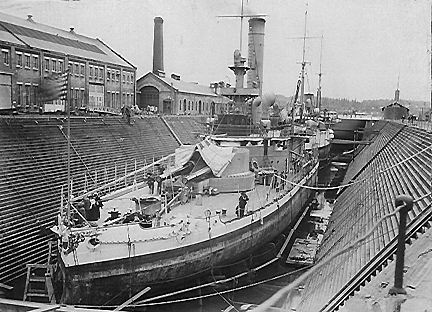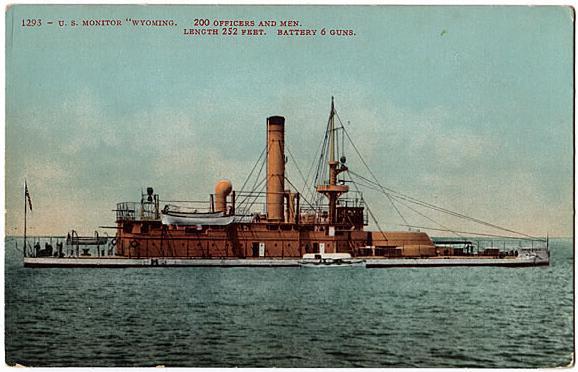
 CHEYENNE subsequently joined the Atlantic Fleet, serving
as flagship and tender for Division 3, Flotilla 1, Submarine
Force, Atlantic Fleet. On 17 December 1918, the ship was transferred
to Division 1, American Patrol Detachment. While with that force,
CHEYENNE lay at Tampico, Mexico, protecting American lives
and property from 16 January to 9 October 1919. Proceeding north
soon thereafter, the warship arrived at the Philadelphia Navy
Yard on 23 October 1919, where she was decommissioned on 3 January
1920.
CHEYENNE subsequently joined the Atlantic Fleet, serving
as flagship and tender for Division 3, Flotilla 1, Submarine
Force, Atlantic Fleet. On 17 December 1918, the ship was transferred
to Division 1, American Patrol Detachment. While with that force,
CHEYENNE lay at Tampico, Mexico, protecting American lives
and property from 16 January to 9 October 1919. Proceeding north
soon thereafter, the warship arrived at the Philadelphia Navy
Yard on 23 October 1919, where she was decommissioned on 3 January
1920.
| Type | Monitor |
| Class | Arkansas |
| Displacement. | 3,225 tons |
| Length | 255 feet, 1 inch |
| Beam | 50 feet |
| Draft | 12 feet, 6 inches |
| Speed | 12.5 knots |
| Complement | 220 |
| Armament |
|
| Armor |
|